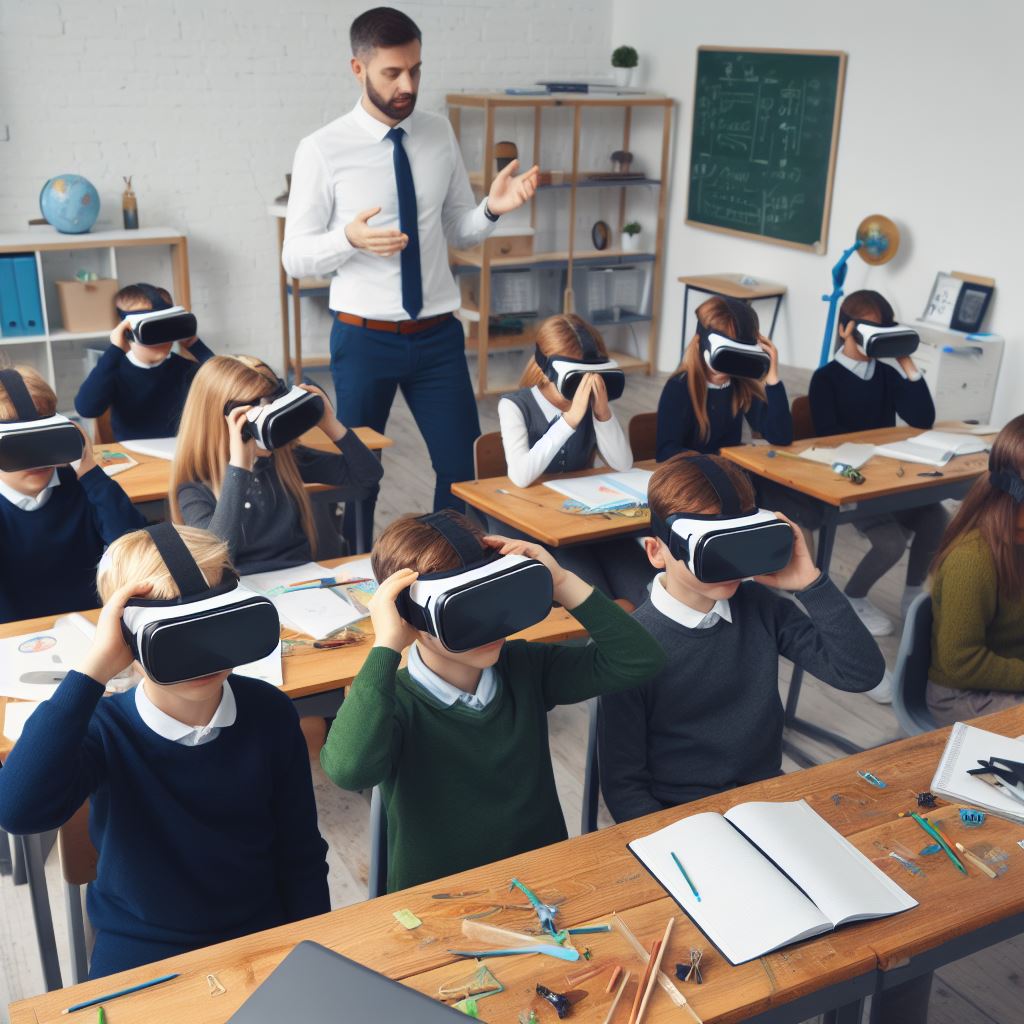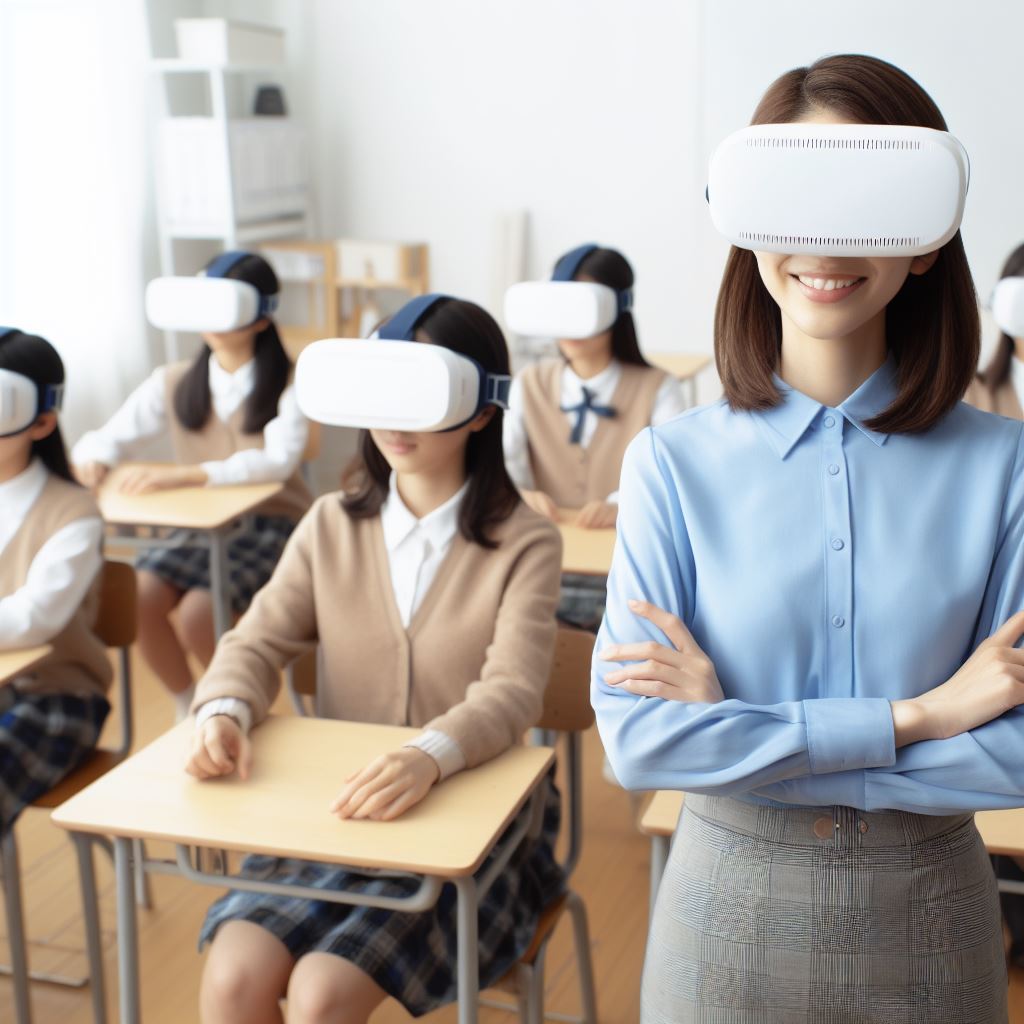Virtual reality (VR) is a technology that creates immersive and realistic simulations of various environments and scenarios. VR can be used for education in many ways, such as enhancing students’ engagement, motivation, creativity, and learning outcomes. In this article, we will explore some of the benefits, examples, and challenges of using VR for education.
Key Takeaways
| Benefits of VR for Education | Examples of VR for Education | Challenges of VR for Education |
|---|---|---|
| – Provides immersive and interactive learning experiences that can increase students’ attention, retention, and recall. | – VR can be used to create virtual field trips, historical simulations, scientific experiments, artistic expressions, and more. | – VR can be costly to develop and maintain, and may require specialized equipment and training. |
| – Allows students to explore and manipulate complex concepts, subjects, or phenomena that are otherwise difficult or impossible to access in real life. | – VR can help students learn about anatomy, astronomy, geography, engineering, and more. | – VR can cause health-related risks such as nausea, eyestrain, headaches, or motion sickness. |
| – Fosters students’ creativity, curiosity, and imagination by enabling them to create their own VR content or collaborate with others in VR environments. | – VR can enable students to design their own games, stories, artworks, or inventions in VR platforms or tools. | – VR can pose privacy and security issues, such as data breaches, cyberattacks, or ethical dilemmas. |
| – Supports students’ socio-emotional skills development by exposing them to different perspectives, cultures, emotions, or situations. | – VR can help students develop empathy, communication, teamwork, or leadership skills by engaging them in VR scenarios or simulations. | – VR can create learner discomfort or disorientation by disconnecting them from their physical surroundings or reality. |
Benefits of VR for Education
VR can offer many benefits for education, such as:
Immersive and Interactive Learning Experiences
One of the main advantages of VR is that it can provide immersive and interactive learning experiences that can capture students’ attention and interest. By wearing a VR headset and using controllers or gestures, students can enter a virtual world where they can see, hear, feel, and interact with the objects and characters in the simulation. This can enhance their sensory and cognitive engagement, as well as their memory and recall of the information they learn.
For example, a study by the University of Maryland found that students who learned in a VR environment performed better on memory tests than those who learned in a desktop environment. Another study by the University of Warwick found that students who learned in a VR environment showed higher levels of motivation and enjoyment than those who learned in a traditional classroom.
Exploration and Manipulation of Complex Concepts
Another benefit of VR for education is that it can allow students to explore and manipulate complex concepts, subjects, or phenomena that are otherwise difficult or impossible to access in real life. For instance, VR can enable students to travel to distant places or times, observe microscopic or macroscopic phenomena, conduct risky or expensive experiments, or create artistic expressions.
For example, Google Expeditions3 is a VR app that allows teachers to take their students on virtual field trips to places such as the Great Barrier Reef, the Taj Mahal, or Mars. The app provides 360-degree images and videos of various locations and landmarks, as well as narration and questions to guide the learning process. Similarly, 1943 Berlin Blitz4 is a VR experience that uses real-life footage from a World War II bombing raid to help students understand what it was like to live through a historical event.
Creativity and Collaboration
A third benefit of VR for education is that it can foster students’ creativity and collaboration by enabling them to create their own VR content or work with others in VR environments. For example, CoSpaces Edu is a VR platform that allows students to design their own games, stories, artworks, or inventions using 3D models, animations, sounds, and code. The platform also allows students to share their creations with others, explore other students’ projects, or collaborate with their classmates or teachers in real-time. Similarly, Minecraft: Education Edition is a VR version of the popular sandbox game that allows students to build, explore, and learn in a virtual world using blocks, tools, and resources. The game also supports multiplayer mode, where students can join online classrooms, work on projects together, or participate in educational challenges.
Socio-Emotional Skills Development
A fourth benefit of VR is that it can support students’ socio-emotional skills development by exposing them to different perspectives, cultures, emotions, or situations. For example, VR can help students develop empathy, communication, teamwork, or leadership skills by engaging them in VR scenarios or simulations that require them to interact with other people or characters, understand their feelings or viewpoints, solve problems or conflicts, or make decisions or actions. For example, Breaking Boundaries in Science is a VR experience that allows students to meet and learn from three female scientists who made groundbreaking discoveries in their fields: Marie Curie, Grace Hopper, and Jane Goodall. The experience also allows students to explore the environments and challenges that these scientists faced, as well as their achievements and impacts. Similarly, VirtualSpeech is a VR app that helps students improve their public speaking, presentation, or interview skills by placing them in realistic VR scenarios where they can practice and receive feedback on their performance.

Examples of VR for Education
There are many examples of VR for education, covering various subjects, levels, and purposes. Here are some of the most popular and innovative ones:
| Subject | VR Example | Description |
|---|---|---|
| Anatomy | HoloHuman9 | A VR app that allows students to explore the human body in 3D, with detailed models of organs, systems, and structures. |
| Astronomy | Titans of Space10 | A VR app that takes students on a guided tour of the solar system and beyond, with realistic models and scales of planets, moons, stars, and asteroids. |
| Biology | Froggipedia11 | A VR app that allows students to learn about the life cycle and anatomy of a frog, without having to dissect a real one. |
| Chemistry | Nanome12 | A VR app that allows students to visualize and manipulate molecules, proteins, and DNA in 3D, with tools for editing, measuring, and simulating chemical reactions. |
| Engineering | Gravity Sketch | A VR app that allows students to create and edit 3D models using intuitive gestures and tools, with features for exporting, importing, and collaborating on designs. |
| Geography | Google Earth VR | A VR app that allows students to explore the world in 3D, with high-resolution images and videos of various locations and landmarks. |
| History | Anne Frank House VR | A VR app that allows students to visit the secret annex where Anne Frank and her family hid from the Nazis during World War II, with narration and historical context. |
| Literature | The Raven VR | A VR app that brings Edgar Allan Poe’s famous poem to life, with immersive visuals, sounds, and animations. |
| Math | Calcflow | A VR app that allows students to visualize and manipulate mathematical concepts such as vectors, curves, surfaces, and integrals in 3D. |
| Music | SoundStage VR | A VR app that allows students to create and play music using virtual instruments, synthesizers, and effects. |
Challenges of VR for Education
Despite the many benefits and examples of VR for education, there are also some challenges and limitations that need to be addressed. Some of the main ones are:
Cost
One of the biggest challenges of VR for education is the cost of developing and maintaining VR content and equipment. Creating high-quality and engaging VR experiences requires specialized skills, tools, and resources, which can be expensive and time-consuming. Moreover, acquiring and updating VR hardware such as headsets, controllers, computers, or sensors can also be costly and challenging, especially for schools or institutions with limited budgets or infrastructure.
Health Risks
Another challenge of VR for education is the health risks associated with wearing a VR headset for prolonged periods of time. Some of the common side effects of using VR include nausea, eyestrain, headaches, or motion sickness. These symptoms can affect students’ comfort, concentration, or performance while learning in VR. Moreover, some students may also experience psychological effects such as anxiety, fear, or dissociation from reality while using VR.
Privacy and Security
A third challenge of VR for education is the privacy and security issues that may arise from collecting, storing, or sharing data from VR users. For example, VR apps may require access to personal information such as name, age, gender, location, or preferences. VR apps may also generate data such as eye movements, facial expressions, or biometric signals that can reveal users’ emotions, interests, or behaviors. These data can be valuable for improving learning outcomes or personalizing learning experiences, but they can also pose risks if they are hacked, leaked, or misused by unauthorized parties.
Learner Discomfort
A fourth challenge of VR for education is the learner discomfort that may occur due to the unfamiliarity or novelty of using VR technology. Some students may feel awkward, embarrassed, or intimidated by wearing a VR headset or interacting with a virtual environment. Some students may also feel isolated or disconnected from their peers or teachers while learning in VR. These factors can affect students’ motivation, engagement, or satisfaction while learning in VR.
Technical Issues
A fifth challenge of VR for education is the technical issues that may occur due to the complexity or instability of VR technology. For example, VR apps may crash, freeze, or glitch while running, causing frustration or confusion for the users. VR hardware may also malfunction, break, or run out of battery, affecting the quality or continuity of the VR experience. Moreover, VR technology may not be compatible or interoperable with other devices, platforms, or systems, limiting the accessibility or functionality of VR content.
Conclusion
VR is a powerful and promising technology that can transform education in many ways. VR can provide immersive and interactive learning experiences that can enhance students’ engagement, motivation, creativity, and learning outcomes. VR can also allow students to explore and manipulate complex concepts, subjects, or phenomena that are otherwise difficult or impossible to access in real life. VR can also foster students’ creativity, curiosity, and imagination by enabling them to create their own VR content or collaborate with others in VR environments. VR can also support students’ socio-emotional skills development by exposing them to different perspectives, cultures, emotions, or situations.
However, VR also faces some challenges and limitations that need to be addressed. VR can be costly to develop and maintain, and may require specialized equipment and training. VR can also cause health-related risks such as nausea, eyestrain, headaches, or motion sickness. VR can also pose privacy and security issues, such as data breaches, cyberattacks, or ethical dilemmas. VR can also create learner discomfort or disorientation by disconnecting them from their physical surroundings or reality. VR can also encounter technical issues such as crashes, glitches, or incompatibilities.
Therefore, VR for education requires careful planning, design, implementation, and evaluation to ensure its effectiveness, efficiency, and safety. VR for education also requires collaboration and communication among various stakeholders such as educators, developers, researchers, policymakers, and students to ensure its quality, relevance, and impact.
I hope you enjoyed reading this article about how VR can transform education. Thank you for your interest and attention. 😊
Subscribe now for hand-picked best experiences, product discounts, and the latest VR trends, tips and tricks, straight to your inbox.



Leave a Reply